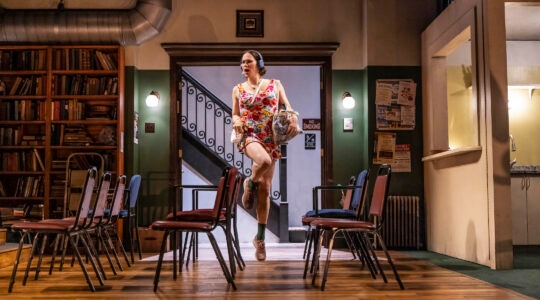In the shadow of a worn brick building, as the July sun poked over roofs and glinted on chimneys, vendors were hauling out crates of ripe red strawberries, green ruffles of lettuce and herb-scented focaccia for the weekly farmer’s market.
It’s summer in the Canal District of Worcester, a city that itself has long labored in a kind of metaphorical shadow. Roughly halfway between cosmopolitan Boston and the vibrant arts communities of the Berkshires, gritty Worcester, a Jewish hub of Central Massachusetts for nearly two centuries, has long been an afterthought for tourists.
That very lack of showiness can, of course, be an asset. You’ll have plenty of space and quiet to contemplate masterworks of American Impressionism masters — John Singer Sargent, Winslow Homer, Maurice Prendergast — at the Worcester Art Museum, which has particularly fine holdings in U.S. art and antiquities from the Colonial Period onward.
And there’s an appealingly low-key feel to the so-called Canal District, where colorful murals and independent booksellers are reviving an old Jewish merchant neighborhood.
This is not a downtown where you’ll fight for parking. On Thursday evenings, it’s even free to hop aboard a horse-drawn chariot for guided tours of the area’s history and landmarks. Blackstone Canal Horse & Wagon Tours are given by students from South High Community School, whose volunteer historians represent the diverse, thoughtful face of modern Worcester.
But seriously: Where are the canals? Under the worn asphalt where Central Massachusetts growers unload their produce, as it turns out.
The ambitious waterway was built by Irish immigrants in the 1820s; its dozens of granite locks at one time transported industrial loads from the factories of downtown Worcester alongside the Blackstone River to Providence and Narragansett Bay, the closest seaport.
As a commercial operation, the Blackstone Canal didn’t last long. Within decades, it had declined into a sewer; the city finally arched over the abandoned locks late in the century. On the streets above, immigrant families — Greek, Jewish, Portuguese, Italian — opened delis and butcher shops, furriers and dry goods stores along Green and Water Streets in a wave of late 19th- and early 20th-century settlement.
In Worcester’s Jewish heyday, more than a dozen synagogues flourished, while Water Street was a locus of East Side Jewish life.
At least one vestige remains of that era: Weintraub’s Jewish Delicatessen, a century-old, kosher-style eatery whose throwback menu — kishkas, half-sour pickles, cabbage soup — attracts nostalgists and pastrami lovers.
The menu is just one way to travel back in time. Outside, part of the building’s brick exterior bears a mural showing Water Street in the Jewish immigrant era, with Stars of David in the windows and men in black hats milling along the sidewalk.
Later, at the Worcester Historical Museum, I saw a photo of Weintraub’s from the 1920s, with the vintage sign it still bears, alongside myriad vanished businesses with Jewish names: Lederman’s Bakery, Cohen’s Meats, Liederman’s produce market.
By the late 20th century, the Jews of Worcester had migrated to the West Side and the suburbs, notably Westborough, home today to a JCC and several synagogues. And the onetime immigrant enclave along Water and Green had declined with the nearby construction of I-290 and the closure of Union Station, once a busy rail hub.
Now that decline is just another chapter in the history of an old Northeastern city — one that, like many others, is seeing a tentative downtown revival. Perhaps nothing quite exemplifies this like Union Station, restored to its status as an urban transit hub, its twin white domes a testament to Worcester’s glory years.
As is Elm Park, first conceived in 1854 and designed by the firm of Frederick Law Oldstead, which also planned Central Park. The gracious public vision of Olmsted is evident in Elm Park’s shady lawns and arched bridges.
Throughout the postwar doldrums, Worcester benefited from the youthful population of Clark University. With a particularly active Hillel and a full kosher meal program, Clark regularly tops those lists of the best colleges for Jewish students (more than 1-in-6 students is Jewish).
Clark students and faculty are among those who have rediscovered Water Street’s past and potential, renovating its historic building stock and flocking to outdoor concerts. Last year, Worcester-based Table Talk — the snack brand beloved for its single-serving, kosher pies that come in a little white box — re-opened a bakery in the Canal District, where the company began.
And once again, crowds are heading downtown to buy string beans and blueberries, over the same canal locks where Russian-born Jews sold produce a century before.
The New York Jewish Week brings you the stories behind the headlines, keeping you connected to Jewish life in New York. Help sustain the reporting you trust by donating today.




